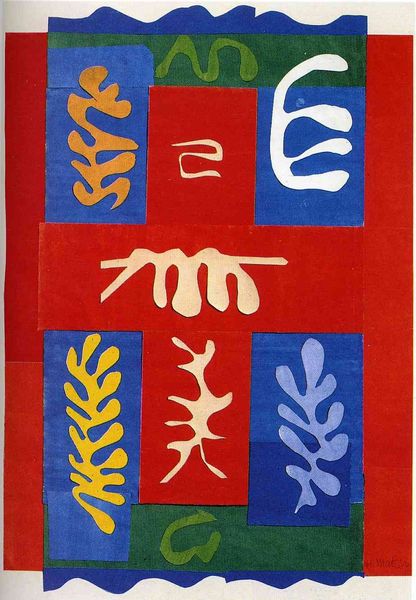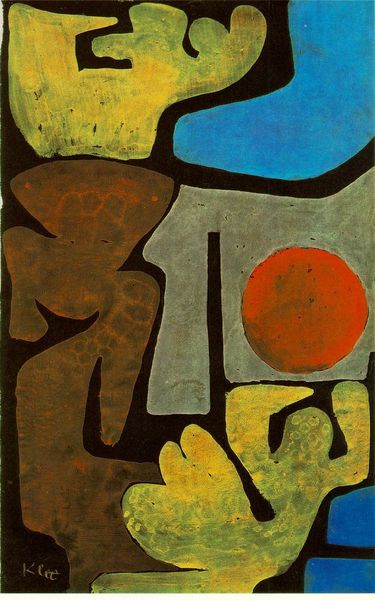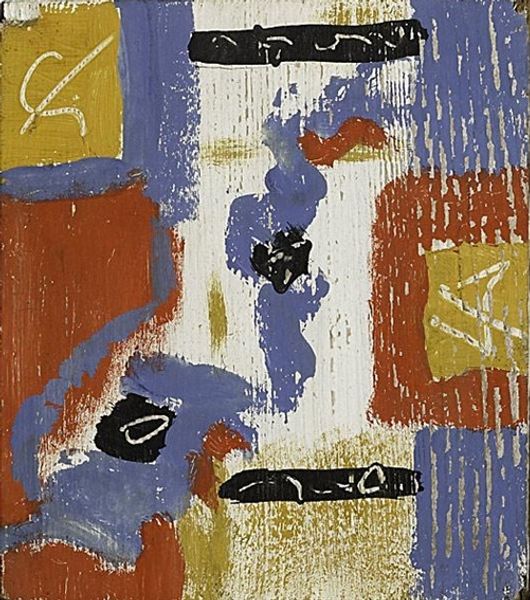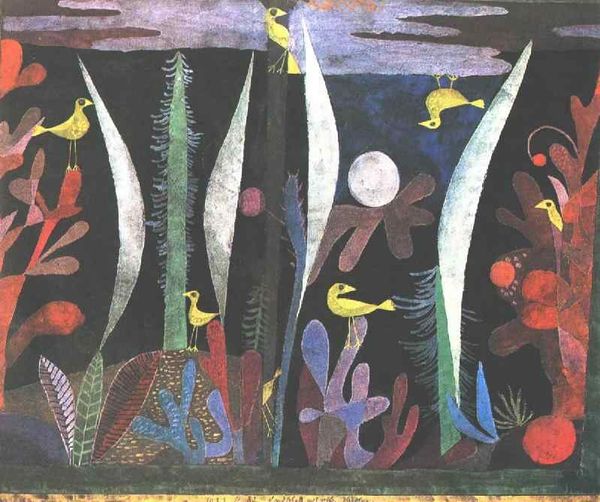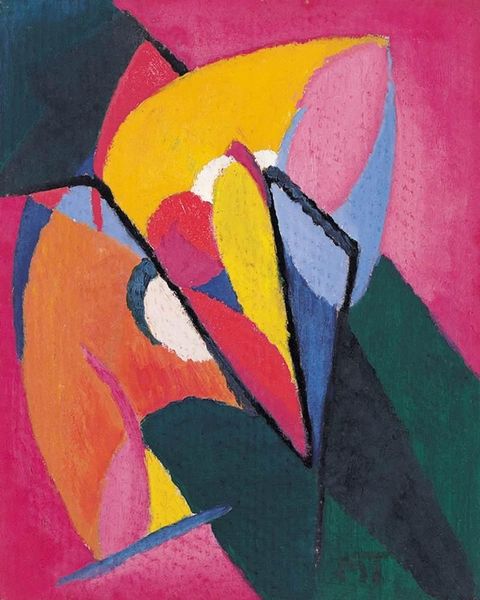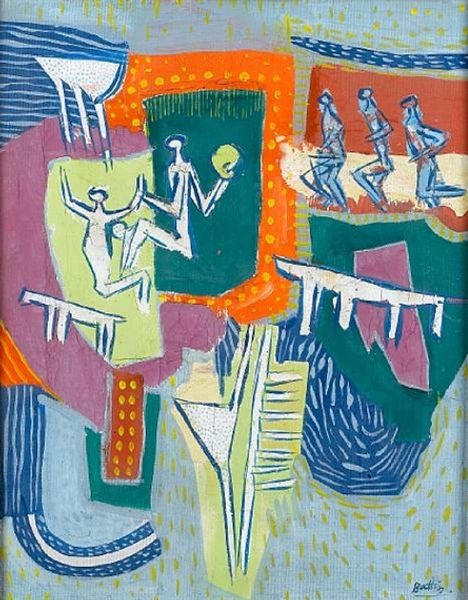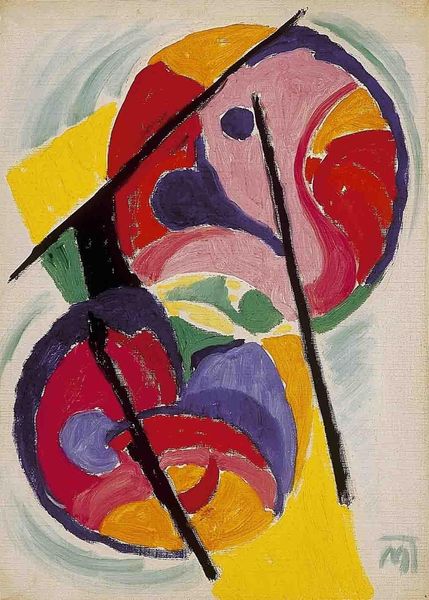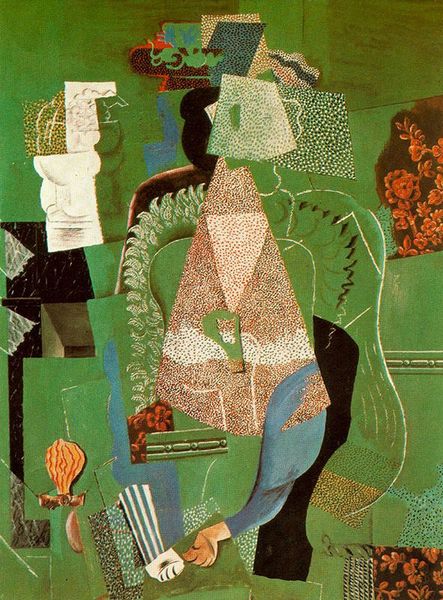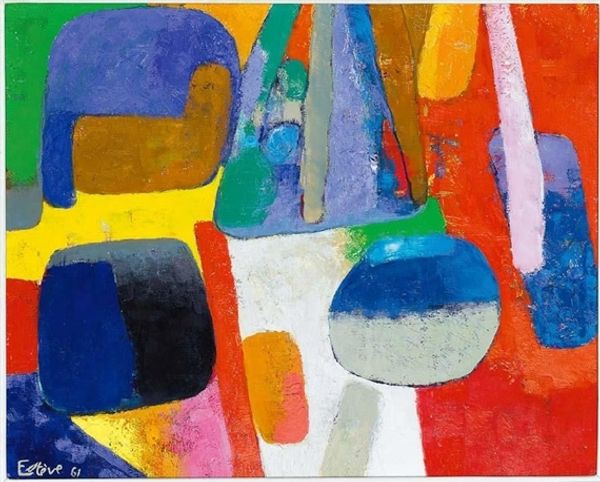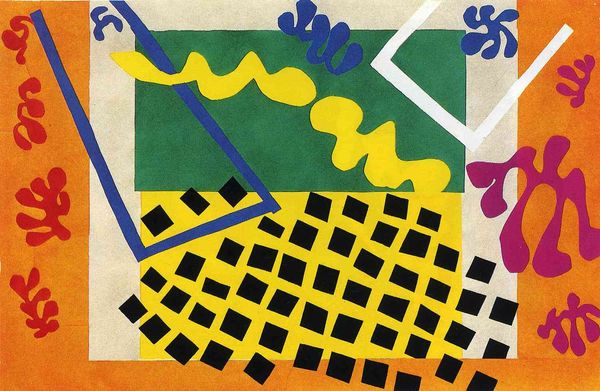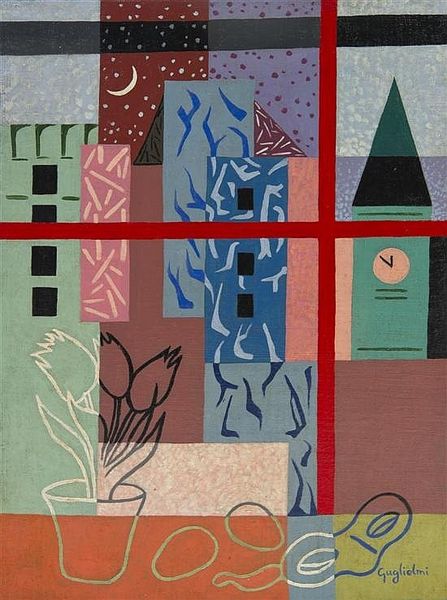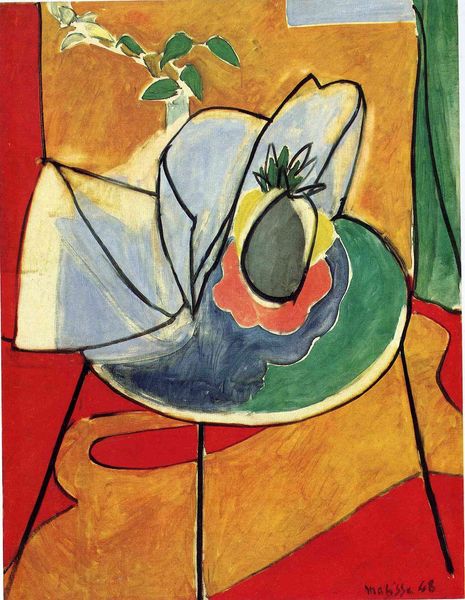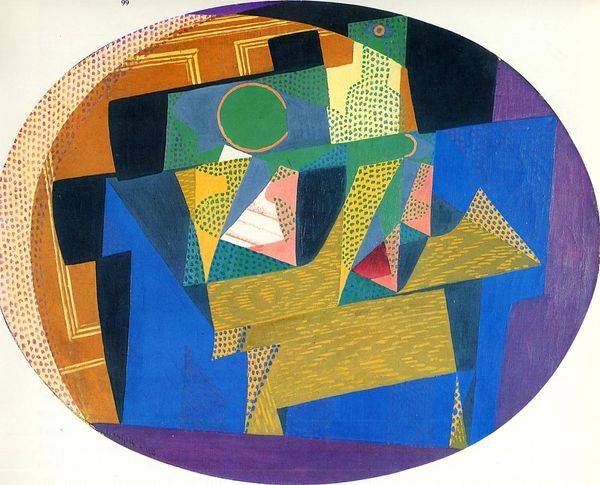
Copyright: Henri Matisse,Fair Use
Editor: So, this is Henri Matisse's "Vegetables" from 1952, made with mixed media including collage and fibre art. It feels playful, almost like a child's blocks, but the colors are really vibrant. How do you interpret this work? Curator: It's intriguing, isn't it? The flat planes of color and simplified forms harken back to Matisse's Fauvist roots, but there's a distinct sense of serenity, reflecting his later work. The vegetables themselves – abstract as they are – become potent symbols. Consider the implications of taking natural forms and distilling them to their essence. What emotional resonance do you think these colours might hold? Editor: Well, the red and orange feel very energetic, and the blues are calming, a nice balance, I think. It reminds me a bit of a garden – organized, but still full of life. Curator: Exactly. Think about the historical context. Post-World War II, there was a collective yearning for life, growth, and renewal. Gardens are traditionally viewed as paradises and metaphors for safety. What's more, consider how Matisse was bedridden at this point. Did he choose *Vegetables* out of an impulse to recall what might have nourished him throughout his journey in life, health and art? Do the geometric structures contain an additional reference, for you? Editor: That makes so much sense. I hadn't thought about his health influencing the imagery, nor considering what was providing *sustenance* to him. And I think that it's like, he's organized it neatly! It’s making it easier for the viewer to 'consume' this. Thanks! Curator: A new perspective opens a new meaning! In essence, even in apparent abstraction, symbols and cultural memory persists. The personal combined with the shared human experience becomes potent, as this one did.
Comments
No comments
Be the first to comment and join the conversation on the ultimate creative platform.
